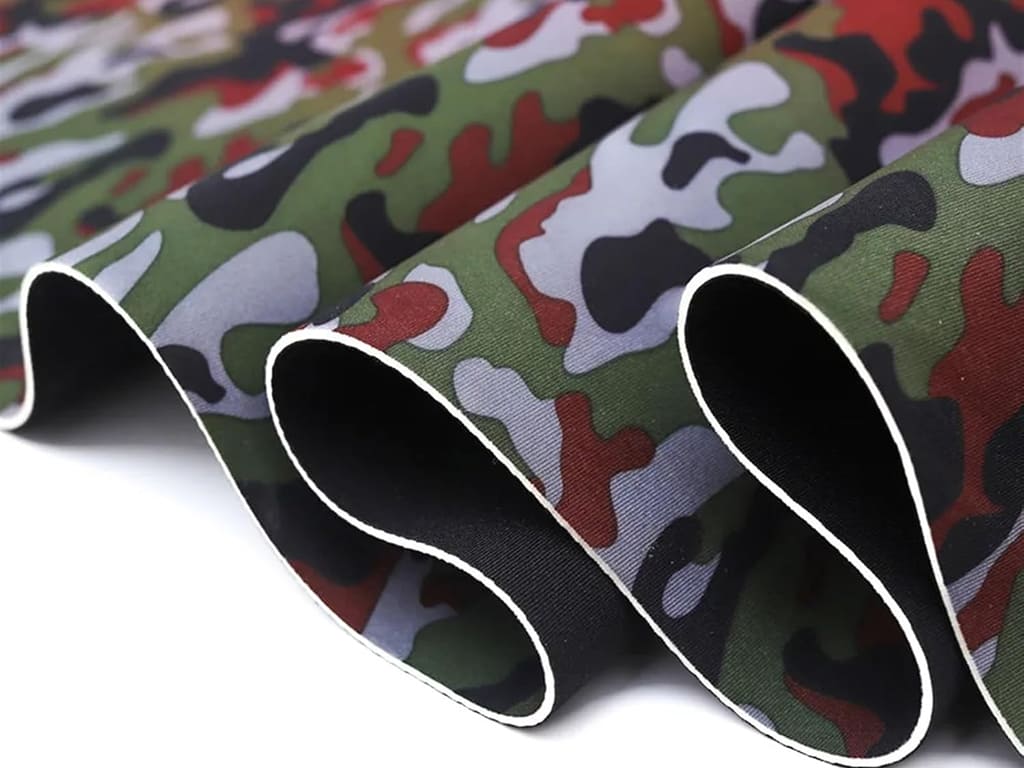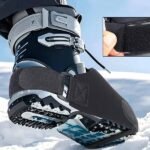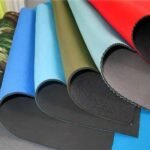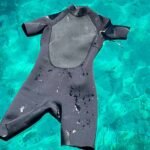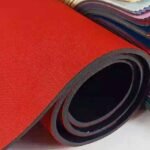Neoprene is a versatile material widely used in wetsuits, koozies, bags, and other products. Despite its many applications, a common question arises: is neoprene breathable? Understanding this characteristic is crucial, especially for brands and retailers looking to choose the right material for their products.
No, neoprene is not breathable because of its closed-cell structure that blocks air and moisture permeability.
However, its unique properties, such as waterproofing and insulation, make it a preferred choice for specific applications where breathability is not essential.
Let’s explore what “breathable” means in fabrics, why neoprene lacks this property, and how its disadvantages can be mitigated to create comfortable, functional products.
What Does “Breathable” Mean in Fabrics?
The term “breathable” is often associated with comfort in clothing and textiles. But what does it actually mean?
Breathable fabrics allow air and moisture to pass through, ensuring better ventilation and comfort.
This property is especially important in activewear, outdoor clothing, and products designed for extended use in warm or humid conditions.
Characteristics of Breathable Fabrics
| Fabric Type | Air Permeability | Moisture Wicking | Common Applications |
|---|---|---|---|
| Cotton | High | Low | Casual wear, bedding |
| Polyester | Moderate | High | Sportswear, outdoor gear |
| Neoprene | Low | Low | Wetsuits, accessories |
Breathable fabrics enhance comfort by allowing sweat to evaporate and regulating body temperature. However, non-breathable materials like neoprene offer other advantages that outweigh this limitation in certain scenarios.
Is Neoprene a Breathable Material?
Given its widespread use, the question of neoprene’s breathability is critical for understanding its applications.
No, neoprene is not breathable due to its closed-cell foam structure that resists air and moisture penetration.
This structure is what makes neoprene highly effective for insulation and waterproofing, but it also limits ventilation.
Why Neoprene Isn’t Breathable
- Closed-Cell Design: The tiny, airtight cells trap air, providing thermal insulation and waterproofing but blocking airflow.
- Material Density: Neoprene’s dense composition prevents moisture from passing through, making it unsuitable for applications requiring ventilation.
- Purpose-Driven Construction: Designed for specific functions like keeping water out or maintaining temperature, breathability is sacrificed for durability and performance.
Applications Where Breathability Isn’t Essential
- Wetsuits: Neoprene’s waterproofing is critical for keeping divers warm underwater.
- Laptop Sleeves: Protects devices from moisture and impacts without requiring airflow.
- Koozies: Maintains drink temperature and prevents condensation without ventilation.
Neoprene’s non-breathable nature doesn’t limit its utility; instead, it makes it ideal for applications where insulation and durability are priorities.
What are the advantages and disadvantages of Neoprene fabric?
While neoprene offers many benefits, understanding its pros and cons is essential for determining its suitability for specific products.
Neoprene’s advantages include insulation, waterproofing, elasticity, and durability, while its disadvantages are lack of breathability, potential odor, and environmental concerns.
Advantages of Neoprene Fabric
| Advantage | Description |
|---|---|
| Thermal Insulation | Traps heat effectively, ideal for wetsuits and gloves. |
| Waterproofing | Resists water penetration, perfect for outdoor gear. |
| Elasticity | Offers flexibility and comfort in various applications. |
| Shock Resistance | Absorbs impact, making it great for protective cases. |
Disadvantages of Neoprene Fabric
| Disadvantage | Description |
|---|---|
| Non-Breathability | Traps heat and sweat, leading to discomfort in warm climates. |
| Odor | New neoprene products may have a chemical smell. |
| Environmental Impact | Non-biodegradable and energy-intensive to produce. |
Balancing Benefits and Drawbacks
Neoprene’s advantages often outweigh its disadvantages, especially in industries that prioritize performance and durability. However, innovations in product design can help mitigate its limitations.
How Can Non-Breathable Neoprene Be Made Comfortable?
While neoprene’s lack of breathability is a limitation, there are ways to improve its comfort for various applications.
Non-breathable neoprene can be made comfortable through modifications like perforation, lining with breathable fabrics, or using hybrid materials.
These techniques ensure that products maintain neoprene’s benefits while addressing its drawbacks.
Methods to Enhance Neoprene Comfort
- Perforated Neoprene: Introducing tiny holes improves airflow without compromising insulation.
- Common in sportswear like knee or elbow supports.
- Breathable Linings: Adding a layer of breathable fabric enhances comfort by wicking moisture away.
- Example: Mesh linings in wetsuits or backpacks.
- Hybrid Designs: Combining neoprene with other materials creates products with balanced properties.
- Example: Shoes with neoprene uppers and mesh panels for ventilation.
Practical Examples of Modified Neoprene
| Product Type | Modification | Benefit |
|---|---|---|
| Sports Braces | Perforated Neoprene | Increased ventilation |
| Wetsuits | Lined with Nylon or Polyester | Enhanced moisture management |
| Fashion Accessories | Hybrid Materials (Neoprene + Fabric Panels) | Improved comfort and aesthetics |
These adjustments make neoprene suitable for a broader range of applications, ensuring user satisfaction even in demanding conditions.
Conclusion
Neoprene may not be breathable, but its unique properties like insulation, waterproofing, and durability make it a standout material for numerous applications. By understanding its limitations and employing innovative solutions, it’s possible to create comfortable and functional neoprene products.
At Szoneier, we specialize in manufacturing high-quality neoprene products tailored to meet diverse customer needs. With years of experience and state-of-the-art production capabilities, we can help bring your ideas to life. Contact us today at info@neoprene-bag.com or visit www.neoprene-bag.com to learn more about our custom neoprene solutions. Let’s work together to create products that blend performance, comfort, and style.

